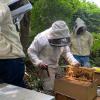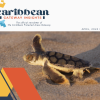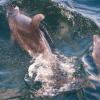Informing marine protected areas in Bimini, Bahamas by considering hotspots for green turtles (Chelonia Mydas)
Knowledge on the spatial distribution, habitat use and processes of site selection by marine turtles is fundamental to identify key habitats, critical resources, and discrete foraging aggregations for protection. This is particularly important for regions of known importance for marine turtles and where widespread habitat degradation is taking place. The waters surrounding Bimini, Bahamas, provide important foraging areas for threatened juvenile green turtles (Chelonia mydas) however, these habitats are being severely degraded by coastal development. To inform managers on the design of planned future no-take marine protected areas (MPA) in Bimini, we used a spatial planning approach and incorporated diverse methodologies (e.g., visual surveys, capture events, passive acoustic telemetry) to identify areas of high use by juvenile green turtles. We also assessed forage items to understand habitat use by green turtles. This information was compared with how various stakeholders use the local waters to identify priority areas for protection within Bimini to maximize conservation of green turtles, while minimizing impact to society, and to meet the conservation target previously stipulated by government officials. Two regions within Bimini (South Flats in south Bimini and Bonefish Hole on the north Island) were identified as important areas for protection and suggestions are made on their considerations for MPA implementation.
Area of Interest: Bahamas
Year: 2019




